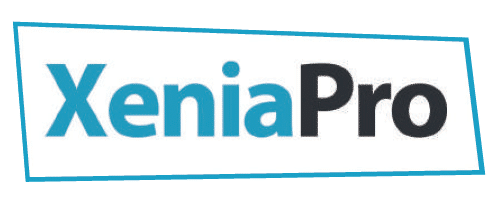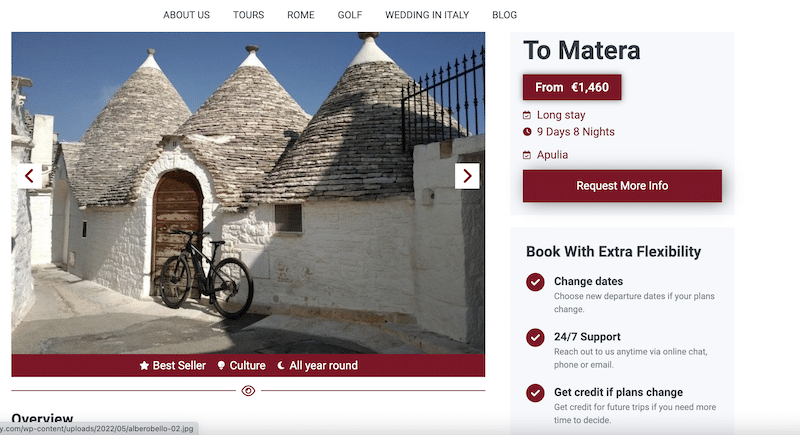
How can you create a tourism website to boost your tours and activity online? It is certainly not a piece of cake, but with professional guidance you can achieve good results. Our advice? If you do not have web developer or web designer in your team, better turn to experts. You will have to convey your business and your passion to them so that they can do the same with your website. This way, your users will feel personally engaged!
Suite Travel is a human-centered tourism website we would like to see with you today: it was born from the passion of its founders and XeniaPro’s ability to turn it into the online. Let’s look at the basic features that make this site a good case study.
Start with the structure: Information Architecture
Information architecture is of paramount importance: that is, metaphorically, the tree, its roots, branches and leaves, everything that is decided upstream, before we get our hands on the information systems.
But what is information architecture? In the words of Luca Rosati: “Information architecture is the organization of information, paths, objects within any environment, physical or digital. It ensures orientation, findability, meaning, and is the basis of any user experience design project.”
Promoting your tourism experiences comes with a great site structure. Designing its architecture means making some strategic decisions:
- How many, and what pages will the site have?
- What will be the purpose of each page?
- What action will the user have to take on each page?
- How will you invite the user to buy that action (call-to-action)?
- What information will each page contain?
- What is the hierarchical relationship between the pages?
- How will the pages be linked together (internal links, menus, etc.)?
- What will the navigation menus contain?
- How will the site’s internal search work?
- How many, and what will be the taxonomies (the categories, tags, or other tools to classify content)?
This brainstorming will help you baste your site structure, which will then serve copywriters and web developers to give real life to your ideas.
Defining the core pages
After defining the tree of your site, you will need to break down the core pages. We consider core pages all the traditionally unmissable pages of a site: homepage, about us page, contact page, product pages. All framed by the header and footer.
Home page: your showcase at a glance
Your Home Page is your most important showcase, because it makes your intent clear at first glance. As in Travel Suite banner, you may decide to enrich it with everything you need to sell: from tour previews to sliders.
About us: your company’s values
The About us page is where you can give free rein to your creativity: it is the page that brings users closest to the human side of the company, its values and its way of doing business. It is often a very underrated page, in favor of other, more service-oriented ones. But without people, even the online world loses authenticity, so we recommend you take care of this page.
Contact page: be available to your users
The contact page is normally a landing page from numerous call-to-actions within the site, so it is essential to equip it with everything useful, to give the user a chance to get in touch with you.
Some tips:
- Include your contact information (phone and e-mail);
- Show your opening hours, if relevant, or some indication of when you generally answer;
- Add a meeting request form, to establish some sort of basic trust with the user;
The product pages: the list of tours, filtered by category/price/destination
The tour pages are the vertical pages about your products: to guide the user to the search, it is useful to create a page with tours that can be filtered by the categories that are most relevant to you. In Travel Suite: duration, travel category, destination, tour type.
Each tour contains a specific product sheet to give your experiences all the visibility they deserve, with the help of tour highlights, photo gallery, integrated map, contact form, and more.
Reviews, Header & Footer: to frame the site
Create a dynamic, comprehensive menu of the most important items to highlight your professionalism and guide search. Add a footer complete with your contact information, social and the chance to sign up for newsletters. Reviews are also a great way to build trust and guide your user.
From structure to content: a SEO-oriented approach
The link between information architecture and SEO is very close. Each page, in fact, ranks on Google on its own. That is, a specific page ranks on Google, not the entire site. If we search for “Tours in Rome” on Google, it will first return pages entirely dedicated to tours in Rome, from which the user can then reach our site at the page dedicated to that category and from there go back up to the homepage.
So? We need to create a site with as many pages as necessary to: present each product, each service, each of the different types, covering the customer journey stages.
This is precisely why it is useful to divide keywords into semantic groups, and each page will contain a certain semantic group, which refers to a specific product category. A well-designed site has these two features:
- Each page has an independent life;
- It serves first to find a business, then to inform and sell.
As you may have guessed, creating a site is an exciting yet time-consuming and activity. It combines a range of skills from search engine optimization and content creation, to web development and web design. That’s why it is important to address experts in the field. Your tourism website is your business card to the world and needs to be cared for and updated over time.




